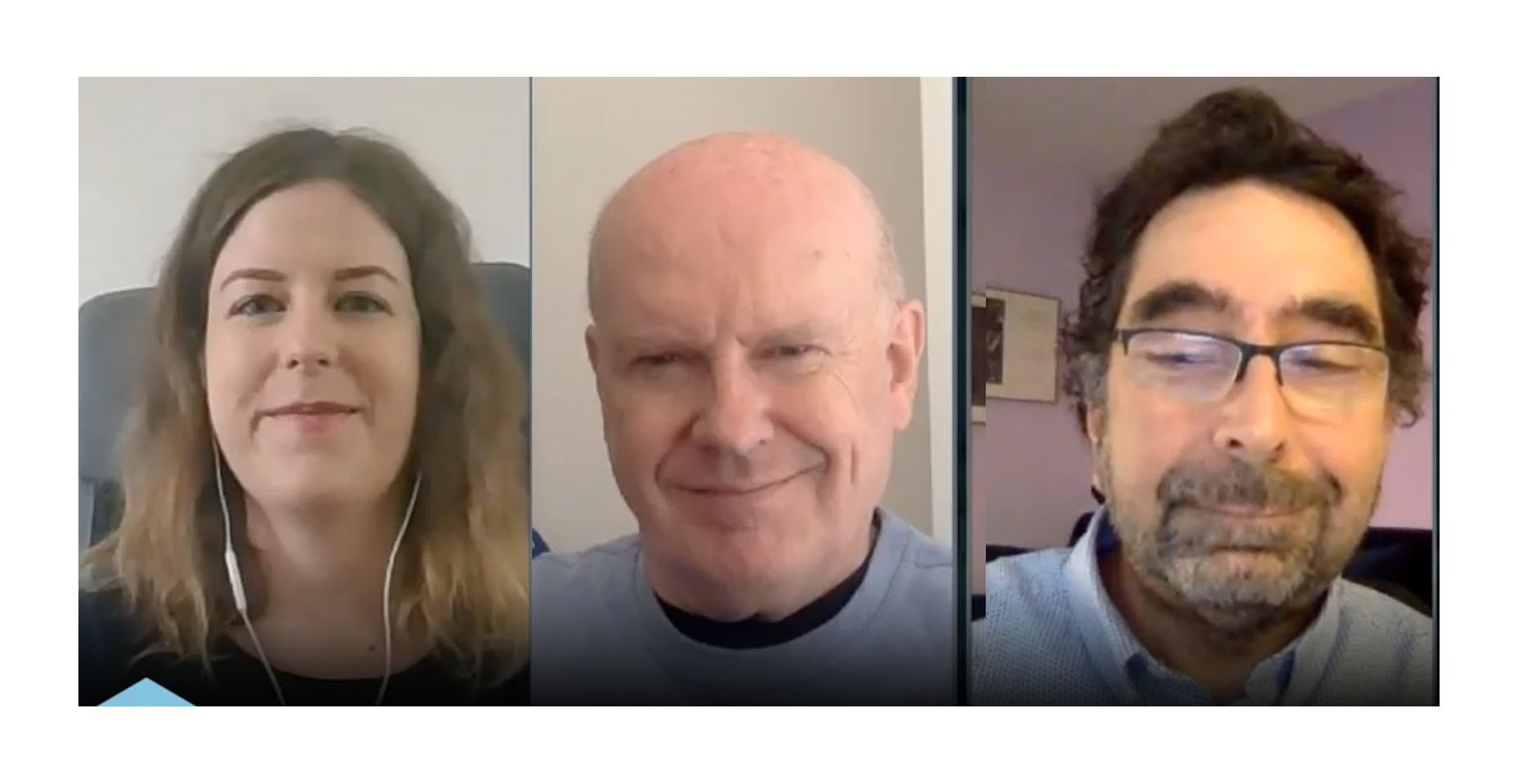 POLICY
POLICY
 POLICY
POLICY
 POLICY
POLICY
The year 2020 has emerged as a perfect storm of reporting for U.S. journalists.
A pandemic that has already claimed the lives of 126,000 Americans would have been a major story by itself. Add in the significant economic impact of COVID-19, ongoing social protests in communities around the country, along with an upcoming presidential election, and the nation’s media is officially in overdrive.
“One of the challenges over the last couple of months has been the sheer influx of stories,” said Brenna Goth (pictured, left), Southwest staff correspondent at Bloomberg Industry Group. “Prioritizing has been pretty difficult. I feel like I’m breaking news almost every day in a way that I wasn’t before.”
Goth spoke with John Furrier, host of theCUBE, SiliconANGLE Media’s mobile livestreaming studio, as part of a special Lumina PR event. She was joined by Gerard Baker (center), editor at large at The Wall Street Journal, and Eric Savitz (right), associate editor at Barron’s. They discussed the impact of the coronavirus on media coverage, a need to cover broader stories during an economic crisis, how public relations professionals can better pitch potential articles and advice for young people seeking to build careers as reporters.
The confluence of major events comes at a time when traditional news media outlets are being challenged to deliver accurate, trustworthy information amid a sea of rumors, erroneous reports and disinformation campaigns being conducted online via social platforms.
Recent Knight Foundation/Gallup surveys show that Americans are currently paying closer attention to news reports in numbers not seen over the previous three years. The surveys also showed a 34% favorable view of the media versus 48% unfavorable.
Journalism has been further challenged by the dynamics of the coronavirus, which has confined most reporters to their homes like much of America. This can present a problem when, as documented in a Pew Research report last year, at least 22% of U.S. newsroom employees live in either New York, Los Angeles or Washington, D.C.
“Journalists tend to cluster in the major metropolitan areas,” said Baker. “The coronavirus has accentuated that. The reporting and editing we’re doing here is inevitably being influenced by the experience that we’ve had in New York.”
For publications covering the financial community, COVID-19 has forced a departure from normal coverage models. Barron’s cover stories typically focus on a particular company, executive or investor. But with the global pandemic causing havoc in numerous sectors of the economy, the publication has largely been focused on broader cover stories, at least until early June when it featured Twitter Inc. and its chief executive officer Jack Dorsey.
“The big stories are macro stories, huge swings in stock prices, huge swings in the price of oil, dramatic moves in almost every financial security that you can imagine,” Savitz said. “These bigger stories have changed our approach. There’s a bit of a struggle for us as we shift our daily coverage to be a little more focused on the macro stories while still trying to tell what’s happening with individual stocks.”
Adjustment by major news services such as Barron’s, The Wall Street Journal and Bloomberg will also require changes on the part of public relations firms and corporate communications teams responsible for turning the spotlight on their clients. Daily news is dominated by the major stories currently gripping the world, and it becomes difficult to gain coverage for another topic when it may not be relevant to larger events of the day.
“The news cycle is so ferocious at the moment, it’s very difficult to insert your way into something that doesn’t touch on the virus or the economy or social unrest or volatility in the financial markets,” Savitz said. “If I’m a communications person, how can I make myself and my clients a resource to media who are trying to tell stories about these things?”
One way to gain a journalist’s attention is to understand a reporter and what he or she generally covers. A survey of 1,300 journalists last year found that a majority received between 50 and 500 pitches weekly and 80% of those surveyed cited irrelevance as a primary reason for declining to respond.
“I’m really genuinely surprised at how many broad pitches I get from people who didn’t know who I was,” Baker said. “Make the extra effort to familiarize yourself with the work that reporter or editor has done. You cannot overestimate the vanity of a reporter.”
The panel of journalists also noted that thinking “outside of the box” can pay dividends. Diversity has become an important national topic, and approaching coverage of a subject with this in mind could have some appeal.
“Something we’re really interested in right now is who we’re quoting and the diversity of our sources,” Goth said. “If you have other people in your company who have the opportunity to talk with the media, I’m really interested in using a diverse list of sources. Now is a really good moment to get new voices in there.”
As of mid-April, the economic downturn caused by COVID-19 had already put 30 million Americans out of work. And 36,000 news media employees have been laid off, furloughed or received a cut in pay. For young people looking to start a career in journalism, different times call for different approaches and a distinctive style could prove to be an asset.
“I fear that too much journalism today is of the same piece,” Baker said. “There is not a lot of intellectual diversity in what we’re seeing; there’s a tendency to follow the herd. Be prepared to go against the grain; have something distinctive to offer.”
Here’s the complete video interview, one of many CUBE Conversations from SiliconANGLE and theCUBE:
THANK YOU